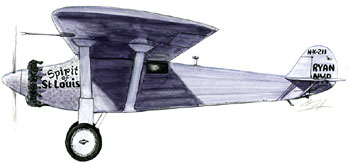B/c of me...........this bad boy no longer flies high over the ground floor of the air and space museum............but rests on the ground....................u people only listen when u want something from me............u pathetic back stabbing cowards..............
\
\
Spirit of St. Louis
From Wikipedia, the free encyclopedia
This article is about the pioneer aircraft. For other uses, see The Spirit of St. Louis (disambiguation).
| Spirit of St. Louis Ryan NYP | |
|---|---|
 | |
| Role | Long-range aircraft [for record attempt] |
| Manufacturer | Ryan Airlines |
| Designer | Donald A. Hall |
| First flight | April 28, 1927 |
| Retired | April 30, 1928 |
| Primary user | Charles Lindbergh |
| Produced | 1927 |
| Number built | 1 |
| Unit cost | $10,580 |
| Developed from | Ryan M-2 |
| Career | |
| Registration | N-X-211 |
| First flight | April 28, 1927 |
| Flights | 174 |
| Total hours | 489 hours, 28 minutes |
| Preserved at | National Air and Space Museum |
The Spirit of St. Louis (Registration: N-X-211) is the custom-built, single engine, single-seat monoplane that was flown solo by Charles Lindbergh on May 20–21, 1927, on the first non-stop flight from New York to Paris for which Lindbergh won the $25,000 Orteig Prize.[1]
Lin
Comments
Post a Comment